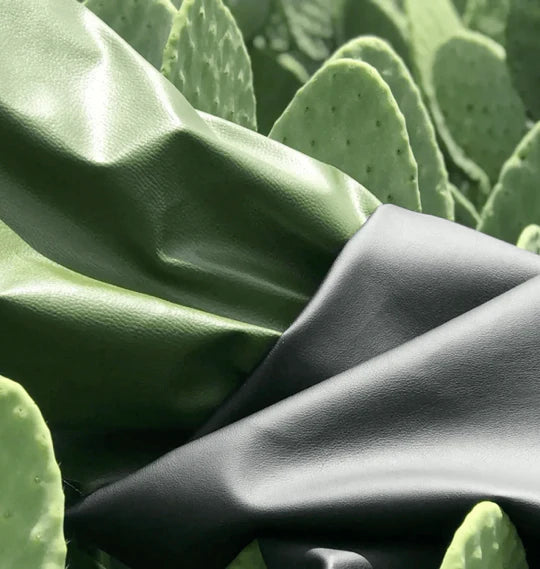The Rise of Cactus Leather: A Sustainable Future for Footwear

In today's eco-conscious world, sustainability isn't just a buzzword; it's a necessary adaptation. As industries scramble to find green alternatives, the footwear sector too is witnessing its own revolution. Enter: Cactus Leather. This innovative material is rapidly carving out a reputation as the face of sustainable fashion, promising a greener footprint for our feet.
What is Cactus Leather?
Cactus leather, or 'Desserto', as it's sometimes branded, is derived from the Nopal cactus, also known as the Prickly Pear. Native to the semi-arid regions of Mexico, this resilient plant offers more than just its fruit. Harvesting the mature leaves without damaging the cactus plant, these are then sun-dried and processed into organic raw material, which undergoes further treatment to become a soft, durable alternative to traditional leather.
One might wonder, “Can cactus truly emulate the touch and durability of animal leather?” The answer is a resounding 'yes'. Not only does cactus leather replicate the texture and durability of animal leather, but it also offers versatility in terms of colors, finishes, and applications, making it a top choice for eco-luxe fashion brands.
The Green Impact of Cactus Leather
Cactus leather is making waves, not just for its aesthetic and tactile appeal but more so for its remarkable environmental benefits:
-
Reduced Water Consumption: Cacti require minimal water, thriving in arid regions. Unlike cotton or the vast amounts of water used in animal farming, the water footprint for cactus leather is astonishingly low.
-
Land Efficiency: Nopal cacti are naturally abundant in places like Mexico. They grow densely and rapidly, making the land use for cactus leather production both efficient and sustainable.
-
Organic Farming: The cultivation of the Nopal cactus does not need pesticides or herbicides, steering clear of the harmful chemicals that many other crops often demand.
-
Decreased Carbon Footprint: Traditional leather processing involves tanning, dyeing, and treatment - all of which have significant environmental impacts. Cactus leather, however, boasts a cleaner production process, resulting in lower CO2 emissions.
-
Animal-friendly: As consumers become more ethically conscious, the demand for cruelty-free products has skyrocketed. Cactus leather serves this demand perfectly, offering a vegan alternative without compromising on quality.
Why Cactus Leather is the Future
Sustainability is no longer just a 'nice-to-have'. With the global shift towards eco-friendly practices and the increasing awareness of the harmful effects of fast fashion and environmental degradation, sustainable materials like cactus leather are not just trendy, they're essential.
Moreover, the dual advantage of offering an eco-friendly material without sacrificing on luxury or quality is what sets cactus leather apart. It's not a compromise; it's an upgrade.
Footwear brands, both established giants and emerging players, are quickly recognizing the potential of cactus leather. Its ability to merge style, sustainability, and functionality positions it uniquely in the market.
In conclusion, the rise of cactus leather is a testament to human ingenuity and the relentless pursuit of sustainable solutions. As the fashion world continues to evolve and prioritize green initiatives, cactus leather stands tall, symbolizing hope and innovation. For consumers and brands alike, it's a step in the right direction, quite literally. As we lace up our shoes and stride forward, the path seems a little greener, thanks to the humble cactus.
